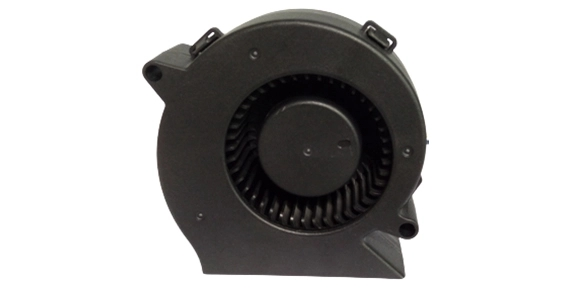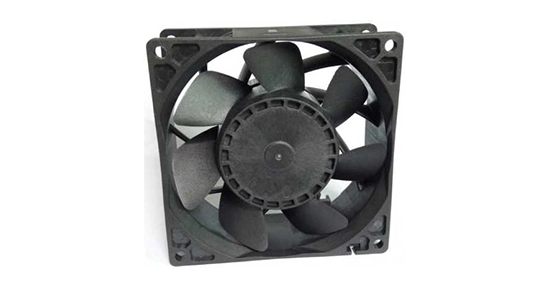The automotive industry is constantly evolving, with advancements in technology leading to improvements in various components, including cooling fans. Automotive cooling fans play a crucial role in maintaining optimal engine performance and preventing overheating. In recent years, several trends have emerged in the design of automotive cooling fans. This article will explore some of these trends, with a specific focus on aerodynamics, variable-speed designs, reducing mass, and the integration of intelligent fan control systems.
Aerodynamics at the Forefront: Streamlining Automotive Electric Fan Performance
There are many axial flow fan applications and many factors contribute to the design of automotive cooling fans. Aerodynamics has become a key consideration. Traditional straight-bladed fans tend to be less efficient due to the drag caused by the blades. As a result, manufacturers are increasingly adopting curved or swept-blade designs. These blades are optimized to improve airflow while reducing noise levels. By streamlining the fan performance through enhanced aerodynamics, vehicles can achieve better cooling efficiency and reduced noise emissions.

Variable-Speed Automotive Electric Fan: Tailoring Cooling Solutions to Demand
Variable-speed automotive electric fans have gained popularity due to their ability to adjust fan speed according to cooling requirements. Unlike fixed-speed fans, variable-speed fans can conserve energy by operating at lower speeds when cooling demands are low, resulting in reduced power consumption. This not only improves fuel efficiency but also decreases noise and wear on the fan motor. By tailoring cooling solutions to demand, variable-speed fans offer a more efficient and customizable approach to engine cooling.
Reducing Mass for Improved Efficiency with Automotive Electric Fan
Automotive manufacturers are constantly seeking ways to reduce the weight of their vehicles to enhance fuel efficiency. The same principle applies to cooling fans. By using lightweight materials, like high-strength polymers or composite materials, the overall weight of the fan can be significantly reduced. This reduction in mass not only improves fuel efficiency but also positively impacts the vehicle's overall performance. Consequently, automotive electric fan is being designed to be lighter without compromising their cooling capabilities.

The Integration of Intelligent Automotive Electric Fan Control
Advancements in technology have led to the integration of intelligent control systems in automotive electric fan . These intelligent control systems monitor and analyze various parameters, such as engine temperature, vehicle speed, and cooling demand, to determine the optimal fan speed. They can adjust the fan speed in real-time, ensuring that the engine remains within the desired temperature range. This integration of intelligent fan control not only enhances cooling efficiency but also enables better vehicle diagnostics and preventive maintenance.
The latest trends in automotive cooling fan design demonstrate a shift towards more efficient and intelligent solutions. By incorporating aerodynamic designs, variable-speed capabilities, reducing mass, and integrating intelligent fan control systems, automotive cooling fans are becoming more effective, energy-efficient, and environmentally friendly. These advancements are not only crucial for maintaining engine performance and preventing overheating but also contribute to overall vehicle efficiency and sustainability. As technology continues to evolve, we can expect further innovations in the automotive cooling fan design, offering enhanced cooling capabilities and improved fuel efficiency.

 EN
EN 

 +
+
 +
+
 +
+



